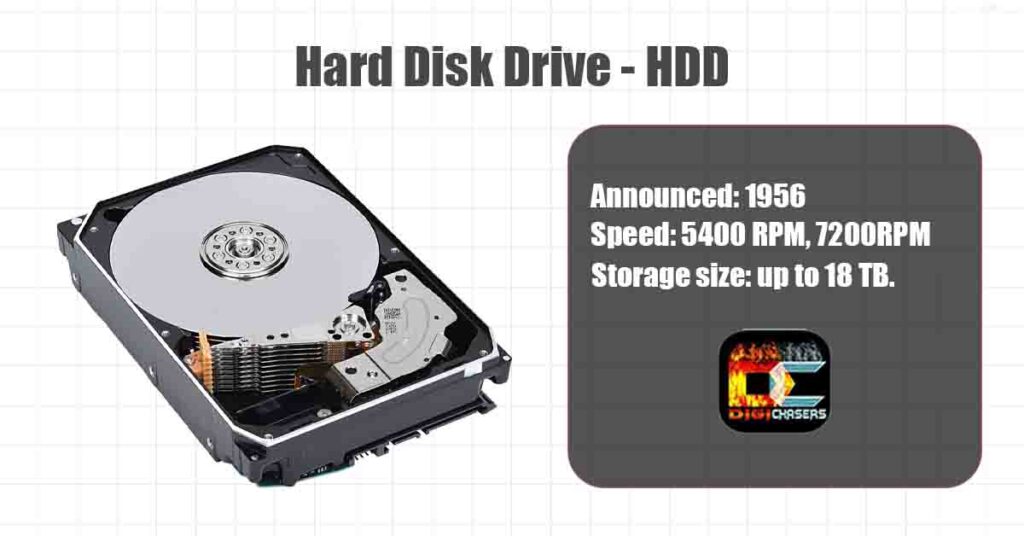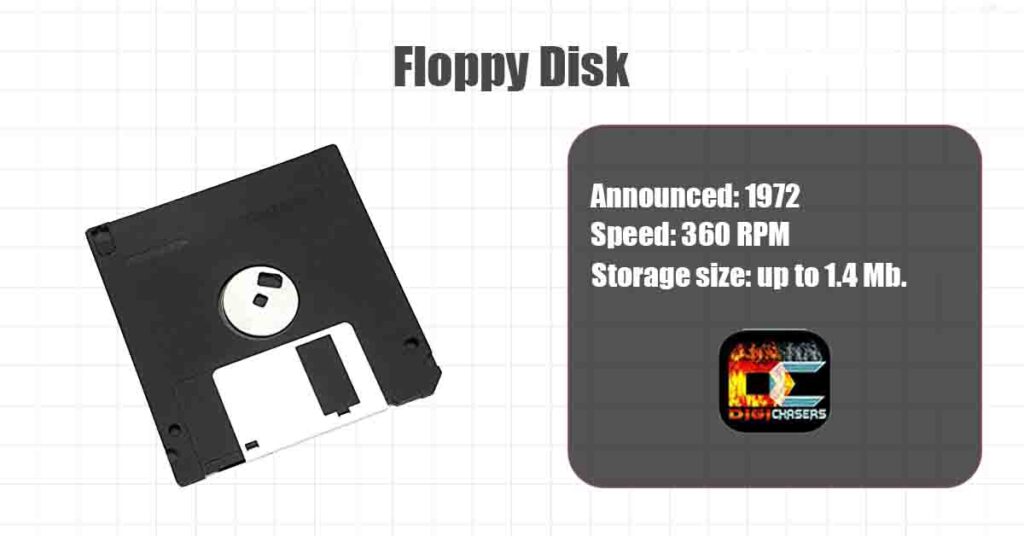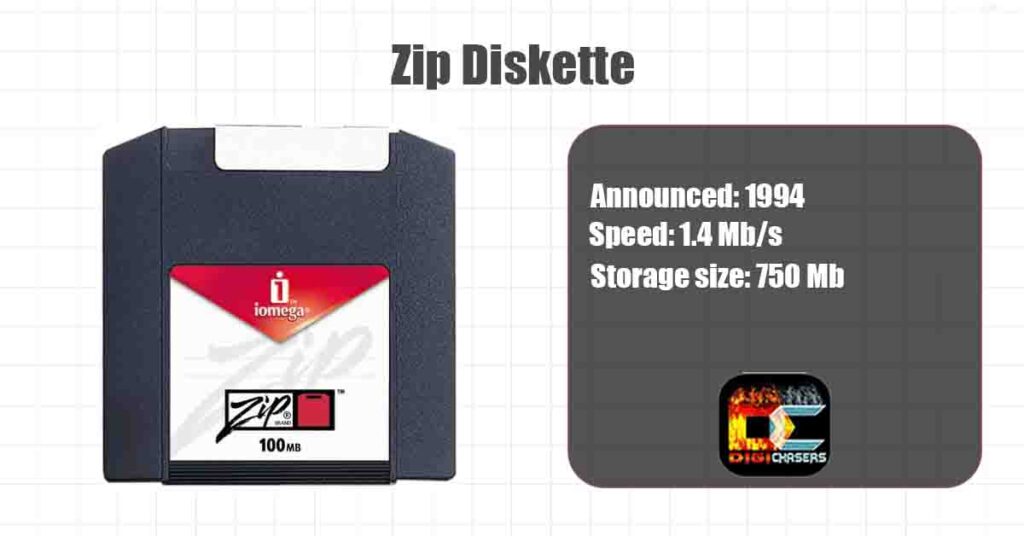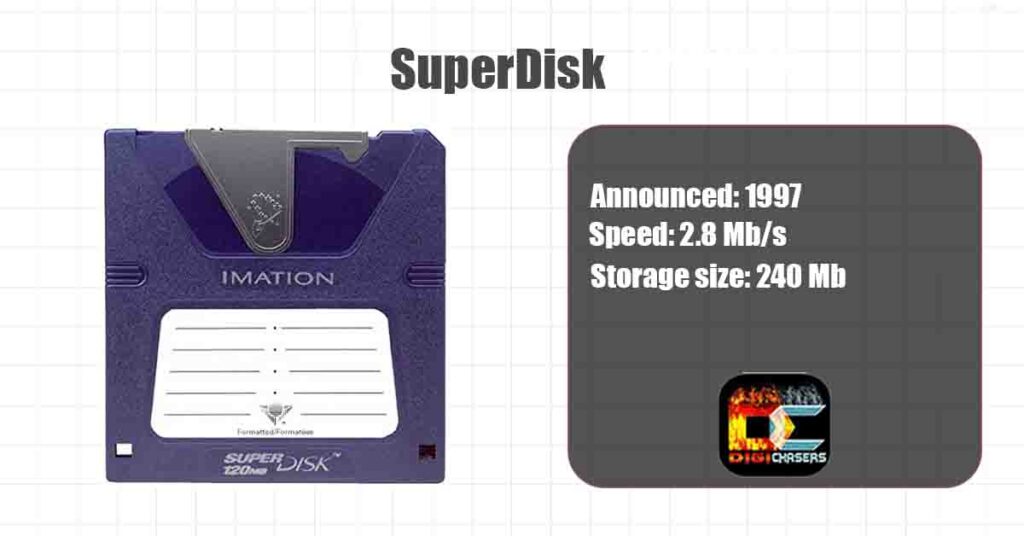Magnetic storage is also referred to by the name of ” Magnetic Media” or ” Magnetic Memory” or ” Magnetic Medium“. The most famous devices which use magnetic storage technology are HDD, Floppy disk, Magnetic tape (cassette). However, more devices operate based on magnetic storage, so we will discuss them as well.
What is magnetic storage?
Magnet storage or magnetic recording is the recording of information on the magnetic medium. Magnetic storage utilizes various designs in magnetisation within a magnetizable substance to store information and is a kind that is permanent memory that is not volatile. The data is accessible using the use of one or several heads that read or write.
How magnetic storage works?
Magnetic material is coated on the top of the disk or tape that can be magnetized in such a way as to store data in tiny dots. The data is present in the form of binary 0 and 1. Hard disk drives are made up of more than one disk layer, and these disks are known as platters. The dots are arranged in circles on the surface of each platter made from glass, ceramic or aluminium coated in nickel alloy that can be magnetized, thus allowing it to store data.
Magnetic storage devices
We will briefly discuss magnetic storage devices.
Hard Disk Drive – HDD

IBM first HDD was announced in 1956. However, the HDD introduced by IBM was far from different from today’s modern HDDs. It was named IBM 350 (It was approximately the size of two medium-sized refrigerators) and could store up to 5 million characters, which would be similar to 5 mb.
A lot of time has passed since the first HDD, so as you might expect, they have significantly improved. Today’s HDD speed standards are 5400 RPM and 7200 RPM (about about 200 MB per second). The problem with not having a faster HDD is that it is a mechanical device with rotating platters inside, and when they reach a certain speed, they can explode.
18 TB HDDs are also available in the market these days. For example Western Digital 18TB WD Red Pro NAS Internal Hard Drive HDD – 7200 RPM.
There are 10,000 RPM and 15,000 RPM HDDs on the market, but they are pretty rare and noisy and also priced accordingly. Hence, people usually choose SSDs that operate on a different principle (no moving mechanical parts).
Floppy Disk

The old generation remembers these devices perfectly. Floppy disks were very convenient and relatively fast and cheap. Their biggest drawback was their small capacity.
The first floppy disk on the market was available in 1972 and was widely used until the late ’90s, when CDs surpassed it.
The floppy disk could store up to 1.4 MB of data at 360 RPM. It was a convenient way to keep notes.
These days, floppy disks are just like a pleasant memory of the past. But, unfortunately, if you buy a floppy disk, it would be difficult to find where it will work, as a long time PC doesn’t have a floppy reader.
Magnetic Tape (Cassette)

Magnetic Tape was mostly used in audio and video recording hosting. If you were born before 21 century, you would remember tape cassettes and big bunky video players VHS.
It is a very old technology that the Germans invented in 1928. Of course, the technology invented was different from the cassettes and VHS cassettes we know well. Like a floppy disk, magnetic tape was killed by a CD. After the widespread use of CDs globally, magnetic tape became less and less popular.
CD surpassed magnetic tape because of the digital sound quality. The peak of magnetic tape in various calculations was until the end of the 20th century.
Standard audio cassettes could store up to 90 minutes of audio, and standard video cassettes (VHS) up to 160 minutes of video and audio.
On December 20, 2020 Fujifilm as well as IBM have announced a the possibility of tape cassettes that have 580 terabytes of capacity made using strontium ferrite as the medium for recording. But such technology will probably never reach the average home user.
Magnetic Drum

Magnetic drum memory is a magnetic storage device developed by Gustav Tauschek in 1932 in Austria. Drums were extensively employed in the 1950s as well as until the 1960s to store data in computer memory. The magnetic drum has a speed of 3,000rpm to 6,000rpm and has a capacity of 15 MB.
This technology has never been used in modern computers, so it is rare for anyone to know about its existence.
This technology was used in World War 2 and later on the first IBM computers such as the IBM 650.
Zip Diskette

Zip drive was an improved version of the floppy disk, first introduced in 1994. Although unfortunate, it has never surpassed the popularity of its predecessor’s floppy drive.
The Zip disk was capable of from 100 Mb to 750 Mb storage memory, which was not bad considering that the floppy disk could hold up to 2 Mb of memory. Zip drive can support a maximum data transfer speed of 1.4 Mb/s.
But knowing that the optical drive CD could hold 700 MB and was significantly faster, it’s clear why the Zip drive didn’t reach its peak of popularity.
SuperDisk

Super disk is another device that had to surpass its predecessor floppy disk. SuperDisk hardware was developed through 3M‘s storage products division Imation in 1997. It was manufacturing primarily being done from Matsushita.
It was created to take over the floppy disc with its larger capacity media that resembled the widely-used format using its own 120 MB (and later, 240 MB) disc storage. The SuperDisk was faster than the Zip disk and could write files up to 3 MB per second.
Like the Zip floppy disk, the Super disk was outperformed by optical devices.
MRAM

MRAM stands for Magnetoresistive random-access memory. In the late 1980s, MRAM was developed, and scientists have claimed that magnetoresistive RAM could eventually outperform other technologies and become the dominant or all-purpose memory.
Unlike semiconductor memories that use electron charge to store data (regular ram, that loses storage after the turn of), MRAM uses electron spin and at the time was called the ideal memory because of its potential to combine the speed of SRAM, the density of DRAM and the nonvolatility of flash memory.
The problem is that MRAM has not yet been developed fast enough to pass SRAM, but so far, everything is still in the process, so there is a chance that MRAM will surprise SRAM in the future.
MRAM has a write speed of 14 ns. However, this technology is still developing. That’s why it is hard to say its maximum speed and capacity potential.
Author Recommended Reads:
- Optical Data Storage Devices: Complete Guide with Examples
- Difference Between SSD and HDD. Simple Answers With Pictures.
- What is PCIe NVMe SSD? Explained.
Frequently Asked Questions
What is the current maximum storage capacity limit of a magnetic tape?
On December 20, 2020 Fujifilm as well as IBM have announced a the possibility of tape cassettes that have 580 terabytes of capacity made using strontium ferrite as the medium for recording. But such technology will probably never reach the average home user.
Which storage device types use magnetic film?
Devices that use magnetic film are HDD, Floppy disk, Magnetic tape, Magnetic drum, Zip diskette, Super disk and MRAM.
What is magnetic storage?
Magnet storage or magnetic recording is the recording of information on the magnetic medium.
What is a magnetic storage device in a computer?
The main and still widely used magnetic storage device in the computer is HDD.
If you have not found an answer feel free to write in the comments, and then we will try to help you as soon as possible.

